An exploration of dark energy and beyond the standard model with analytical and numerical tools for the large scale structures of the universe
Santiago Casas
Postdoctoral Researcher
TTK, RWTH Aachen University


@santiagocasas @sant87casas


Dark Energy & Modified Gravity
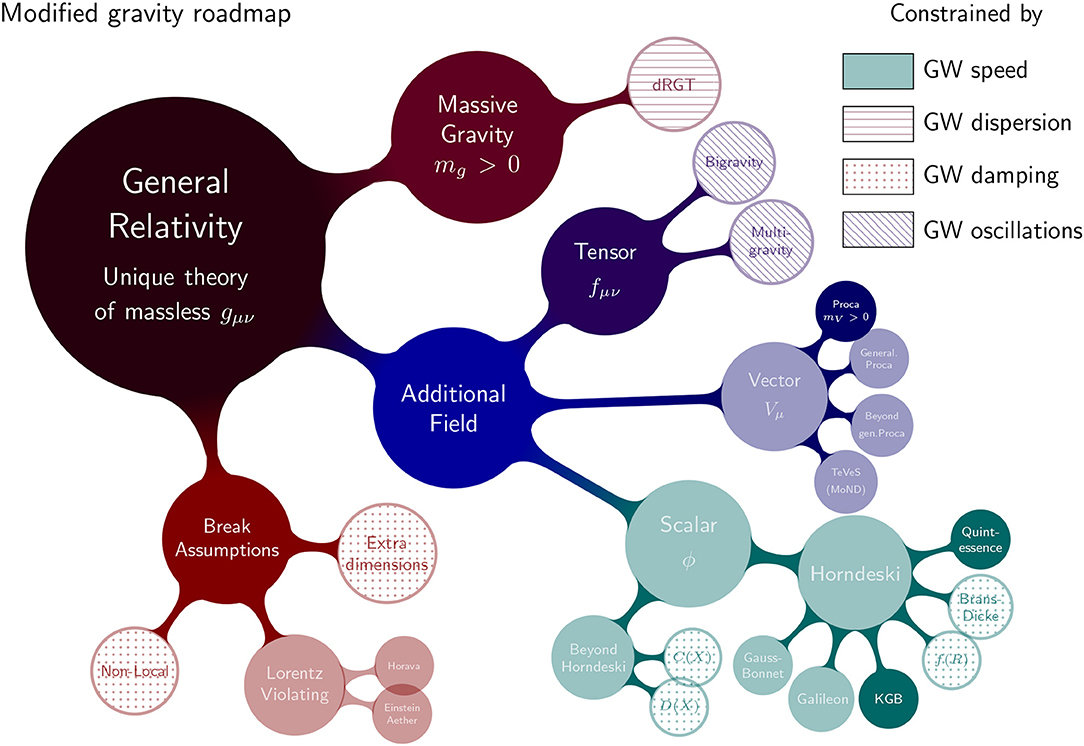



The Horndeski Lagrangian
PhD thesis: Non-linear structure formation in models of Dark Energy and Modified Gravity, http://archiv.ub.uni-heidelberg.de/volltextserver/23120/

Beyond Einstein's GR
Scalar-Tensor theories
Effect on LSS
N-Body simulations

CONCEPT: Python and Neutrinos
GADGET2/CoDECS

Credit: Yun Ling, My bachelor student,
Jeppe Dakin (U. Zurich)
Credit: Dr. Marco Baldi, Master thesis co-supervisor

Approximate methods: COLA

ABACUS: Fits for GCspectro with 1loopEFT
Other codes tested:
gevolution
flowpm

GNQ: Growing Neutrino Quintessence (developed in Heidelberg)
Credit: Winther, Casas, Koyama, Li,...
Credit: Casas, Führer, Ayaita, Weber, Wetterich
Credit: Rademacher, Moradinezhad, Lesgourges, Casas
My Journey with Euclid
Credits: www.esa.int/Science_Exploration/Space_Science/Euclid, www.euclid-ec.org, ESA/NASA/SpaceX, Euclid Consortium



Euclid consortium scientist visits Cannes. Credits: ThalesAlenia Space


Euclid preparation: VII. Forecast validation for Euclid cosmological probes,,Blanchard et al. arXiv:1910.09273

★ Awardees of the Euclid STAR Prize Team 2019


EC Builder Status achieved 2023

Early Release Observations. ECICOM, ECEPO: Social media manager of instagram: @euclidconsortium


Euclid Launch: 1st July 2023
Large forecasting projects
The Fingertip Galaxy

WEAK Lensing and Galaxy Clusteering



SC, Lesgourgues, Schöneberg, et al., Euclid: Validation of the MontePython forecasting tools, 2303.09451

SC, Kunz, Martinelli, Pettorino, Phys.Dark Univ. 18 1703.01271
3x2pt Photometric Cosmic Shear + Clustering
Spectroscopic Galaxy Clustering: BAO+RSD+DM+LSS+Galaxy bias
Excellent complimentarity

https://www.esa.int/Science_Exploration/Space_Science/Euclid/Euclid_test_images_tease_of_riches_to_come
FISHER Matrix FORECASTS

Code: CosmicFish
S.Casas, M.Martinelli and M.Raveri
Soon to be released: Full pythonic version
https://github.com/santiagocasas/cosmicfishpie

Cosmomathica/Fishermathica
Python, Numpy-intensive
Couples to CAMB, CLASS, HiCLASS, MGCAMB, input4cast files
GC, WL, 21cm-IM, 3x2pt, CMB
Euclid, DESI, Rubin LSST, SKAO
Wolfram Language,
Cosmomathica-FORTRAN link for CAMB
GC, WL
Euclid, SKA1
Used to produce and validate IST:F forecasts 2015-2019


Hessian of a Gaussian Likelihood. Used to approximate posterior distributions at the maximum (fiducial value)

First code to be validated against MontePython MCMC forecasts


SC, Lesgourgues, Schöneberg, et al., Euclid: Validation of the MontePython forecasting tools, 2303.09451
Euclid preparation: VII. Forecast validation for Euclid cosmological probes,,Blanchard et al. arXiv:1910.09273

SC, Kunz, Martinelli, Pettorino, Phys.Dark Univ. 18 1703.01271
https://github.com/santiagocasas/cosmomathica
Euclid theory working group
SC, I. Tutusaus : Work Package lead of WP6, Forecasting and statistics
SC: Member of WP1,2,3,4,6,7,11 : From theory and non-linearities to likelihood
SC: Co-coordinator of the KeyPaper-Theory-1 project


SC, Cardone, Sapone, et al, Euclid: Constraints on f(R) cosmologies from the spectroscopic and photometric primary probes, 2306.11053

Frusciante, Pace, Cardone, SC et al, Euclid: Constraining linearly scale-independent modifications of gravity with the spectroscopic and photometric primary probes, 2306.12368
Main tasks:
Constrain gravitational potentials
Test for screening mechanisms
Check theories of modified gravity

Requires expertise with modified Einstein-Boltzmann solvers,
Emulators, Halo-model,
Fisher and likelihoods
Euclid: Likelihood and Nonlinear TASKFORCES
- GCspectro: EFT 1-loop RSD in multipoles
- 3x2pt photo:
- Covariance, nonlinear Super-Sample
- Galaxy Bias expansion
- Emulators for nonlinear, HMCode, Halofit, Bacco, EuclidEmu
- Baryonic Feedback: different parameters
- Different emulators with systematic offsets
- Euclid error bars can distinguish among them
EUCLID PRELIMINARY


Credit: P. Carrilho for IST:NL
Credit: SC, for IST:NL

Cosmological Likelihood for Observables in Euclid

Credit: SC, for IST:L

Credit: SC, for IST:NL
SC: Main developer and core member of CLOE. KeyPaper co-lead of 3x2pt in IST:NL
Preparation of DR1 analysis
- Biasing when failing to analyse data with correct model of baryonic feedback
Other Surveys and CROss-correlations

Vera Rubin Observatory, LSST Project Office - http://www.lsst.org/gallery/telescope-rendering-2013

DESI telescope in Tucson, Arizona, in the Schuk Toak District on the Tohono O’odham Nation


Square Kilometer Array Observatory https://www.skao.int/



SC, Carucci, Pettorino et al (2022), Constraining gravity with synergies between radio and optical cosmological surveys, 2210.05705

CMB Stage-IV experiments: https://kipac.stanford.edu/research/projects/cmb-stage-4
Invited talk at the Manchester Optical x Radio Synergy meeting
Neutrinos and LSS with Euclid & more
Euclid Preparation: Sensitivity to Neutrino parameters. (Under internal review). Archidiacono, Lesgourgues, SC, Pamuk, et al.
EUCLID PRELIMINARY






- \(M_{\nu}\) and \(N_{\rm eff}\)
- Combination of different probes breaks degeneracies
- For our given \(\ell_{\rm max}\) the effect of baryonic feedback is small <10%
- Euclid (all) 1\(\sigma\) error: 30-60 meV
Text
future avenues of work
Merci!!

In collaboration with Johanna Schaffmeister and Sven Günther, students at RWTH
- More work on uncertainty-aware emulators. https://github.com/santiagocasas/looti
- Both for non-linear power spectra, as well as for baryonic feedback, MG-effects and neutrinos.
- Work on 1loop-EFT for LSS in the case of GC-spectro (currently in prep. with Linde, Lesgourgues and Moradinezhad. Inclusion of consistent treatment for Neutrinos and Modified Gravity. (in collab with Linde, Pietroni, Fidler).
- JAX-COSMO: Campagne, Lanusse, Zuntz, SC, et al, 2302.05163.
- Implement auto-differentiability into commonly used codes in the field: CLASS, CAMB, HMCode, Looti, and Euclid codes: CLOE.
- Use auto-diff emulators: CosmoPower (Spurio-Mancini, et al)
- SC: Invited participant at 3-month MIAPP Differentiable physics workshop
- This allows for fast, efficient variational parameter estimation, orders of magnitude faster than conventional tools. Data compression, automatic Fishers, optimization, etc....
- Careful study of the effect of emulators and baryonic feedback on the Euclid 3x2pt observables. Parameter estimation biases, efficient sampling, sensible priors....
- Preparation of consistent (and alternative) pipelines for Euclid data release analysis, including cross-correlations with Clusters, Voids or other non-Gaussian observables and correlations with other surveys such as CMB, radio 21cm IM, SNIa and gravitational wave sirens.




BACKUP
https://www.esa.int/Science_Exploration/Space_Science/Euclid/Euclid_test_images_tease_of_riches_to_come
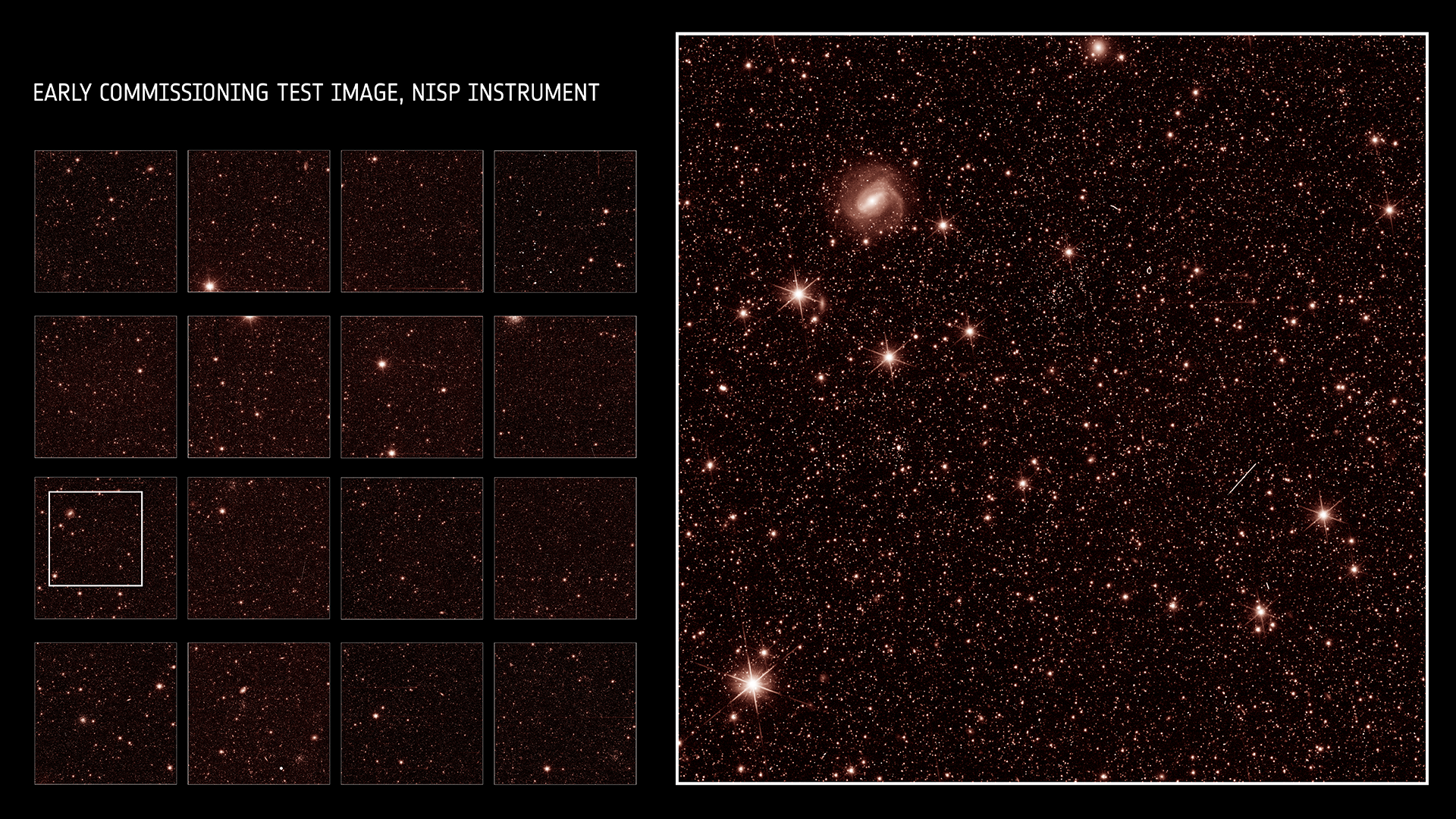
Do galaxies just randomly spread out across the sky?
https://www.esa.int/Science_Exploration/Space_Science/Euclid/Euclid_test_images_tease_of_riches_to_come

No they do not, there is actually a 2-point correlation (and higher orders) among them
Expresses the excess probabilty of finding another galaxy as a function of scale
Strong hint that some physical mechanism is at play


https://www.esa.int/Science_Exploration/Space_Science/Euclid/Euclid_test_images_tease_of_riches_to_come
Shape and orientation of galaxies is also correlated -- due to Weak Gravitational Lensing -- and this tells us about (dark) structures in the Universe
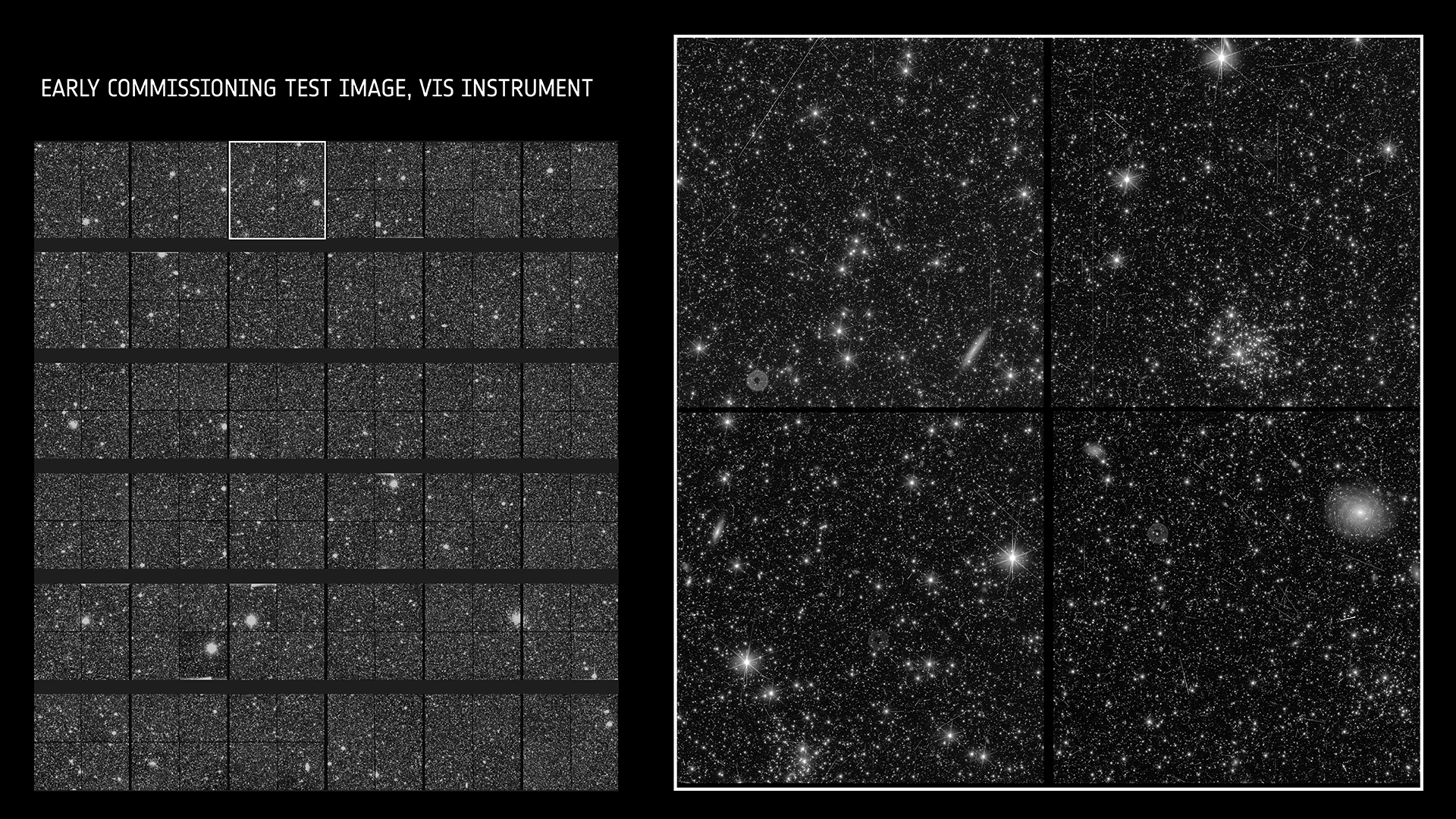
Dynamical Dark Energy + Neutrinos
Euclid Preparation: Sensitivity to Neutrino parameters. (Under internal review). Archidiacono, Lesgourgues, SC, Pamuk, et al.
EUCLID PRELIMINARY


machine Learning and variational methods
- In era of Big Data (billions of raw data points) and hundreds of possible models and simulations:
- Important to be as computationally efficient as possible
- Important to be as computationally efficient as possible
- Likelihood codes for Euclid 2-3s per evaluation, Einstein-Boltzmann codes 1-100 seconds (depending on model -> too slow!!
- Automatic-Differentiable (AD) codes: Leverage variational methods, such as Hamilton MC, AD-Variational Inference, Exact Fisher and beyond

In collaboration with Johanna Schaffmeister and Sven Günther

jaxcosmo library https://github.com/DifferentiableUniverseInitiative
Campagne, Lanusse, Zuntz, SC, et al, 2302.05163

Parametrized modified gravity

Beyond \(\Lambda\)CDM the two linear gravitational potentials \(\Psi\) and \(\Phi\) are not equal to each other
We can describe general modifications of gravity (of the metric) at the linear perturbation level with 2 functions of scale (\(k\)) and time (\(a\))
Only two independent functions!
Parametrized approach for perturbations:
Parametrized modified gravity
- Using Planck satellite data in 2015 and 2018, constraints were obtained on these two functions \(\mu\) and \(\eta\).
- Late-time parametrization: dependent on Dark Energy fraction



Planck 2018 results VI, arXiv:1807.06209
Planck 2015 results XIV, arXiv:1502.01590
Planck alone relatively unconstrained: 100-500% errors
Parametrized modified gravity

Forecasts for Stage-IV : Euclid, DESI, SKA1, SKA2, only GC and WL
SC, Kunz, Martinelli, Pettorino, Phys.Dark Univ. 18 1703.01271


- Study more general case of free \(\mu\), \(\eta\) functions at each bin
- Non-linearities crucial for constraints
- Z-PCA decorrelation
- Constraints on \(\mu\), \(\eta\) of O(10%)
- For late-time and early-time scenario:
Constraints on \(\mu\), \(\eta\) of O(3%) - When combining GC+WL+Planck priors

Vera Rubin LSST
Square kilometer array (SKAO)


- Modelling is very analogous to GCsp, with brightness temperature on top and different biases
- GCsp-IM Cross-correlation in overlapping bins
- DESI : Two galaxy samples
- SKAO: HI Galaxies and 21cm-IM
\(P^{\rm IM}(z,k) = \bar{T}_{IM}(z)^2 \rm{AP}(z) K_{\rm rsd}^2(z, \mu; b_{\rm HI}) \)
\(FoG(z,k,\mu_\theta) \\ \times P_{\delta\delta,dw}(z,k) \)
\( K_{\rm rsd}(z, \mu; b_{\rm HI}) = [b_{\rm HI}(z)^2+f(z)\mu^2] \)
\( b_{\rm HI}(z) = 0.3(1+z) + 0.6 \)
\( \bar{T}_{\mathrm{IM}}(z)= 189h \frac{(1+z)^2 H_0}{H(z)}\Omega_{HI}(z) \,\,{\rm mK} \)
\(\Omega_{HI} = 4(1+z)^{0.6} \times 10^{-4} \)
Carucci et al (2020) 2006.05996
Jolicoeur et al (2020) 2009.06197
\(P^{{\rm IM} \times \rm{g}}(z,k) = \bar{T}_{\rm IM}(z) {\rm AP} (z) r_{\rm IM,opt} K_{\rm rsd}(z, \mu; b_{\rm HI}) \)
\( \times K_{\rm rsd}(z, \mu; b_{\rm g}) FoG(z,k,\mu_\theta) P_{\delta\delta,dw}(z,k) \)
\( \times \exp[-\frac{1}{2} k^2 \mu^2 (\sigma_{\rm IM}(z)^2+\sigma_{\rm sp}(z)^2)] \)
SC, Carucci, Pettorino et al (2022) 2210.05705
Brightness temperature of 21cm emission line
Fraction of neutral hydrogen in the Universe
Vera Rubin LSST
Radio x Optical Cosmology

SC, Carucci, Pettorino et al (2022) 2210.05705



- WL is better at measuring \(\Sigma\) (40% relative error)
- GC is better at measuring \(\mu\) (20% relative error)
- SKAO-all-probes constrains at 3-5% relative error
- At Planck best fits
- DESI(GCsp)xSKAO(IM) helps in \(h, \sigma_8\) but not in MG parameters
- Combination of SKAO + one Stage-IV probe is as good as two Stage-IV
- Different noise and systematics -> break degeneracies
other models (To Be tested) with STAGE-IV

SC, Rubio, Pauly et al (2017) 1712.04956
Higgs-Dilaton inflation: early-late Universe connection

Model-independent anisotropic-stress \(\eta\)
Amendola, Pinho, SC 1805.00027

SC, Amendola, Baldi, Pettorino et al 1508.07208
Coupled Quintessence: DM-DE



Surviving Horndeski EFT
Frusciante, Peirone, SC, Lima, 1810.10521, Phys.Rev.D 99
Text

Growing Neutrino Quintessence
SC, Pettorino, Wetterich 1608.02358
CosmicFish Code

Code: CosmicFish
S.Casas, M.Martinelli and M.Raveri
Soon to be released: New full pythonic version
https://github.com/santiagocasas/cosmicfishpie

Fisher Information Matrix:
Curvature (Hessian) of the Likelihood
Example: Fisher Matrix for a Gaussian likelihood of angular power spectra:


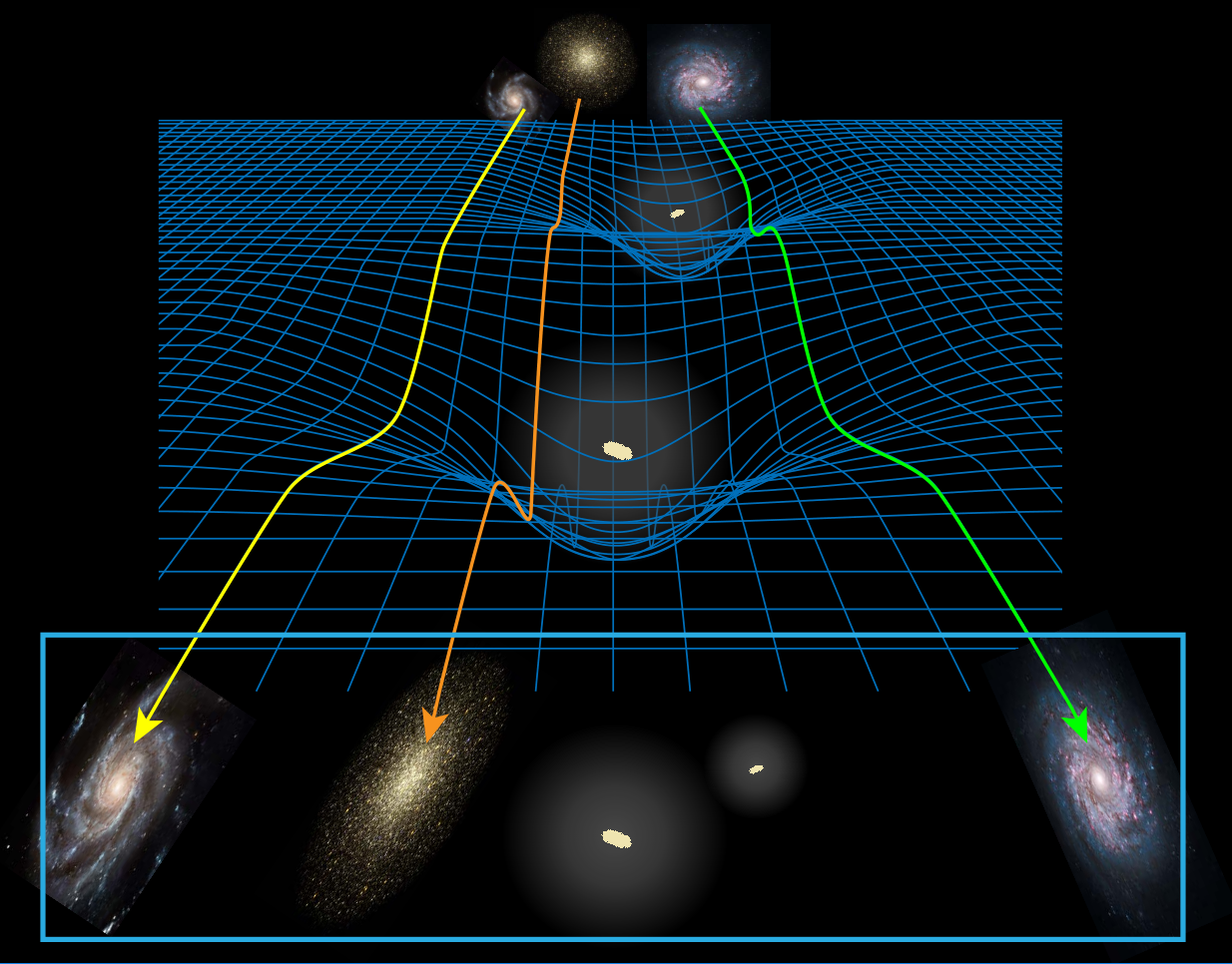
Classifying by screening
- Modified Gravity theories should recover GR at small scales, especially in dense regions, screening needed!
Brax, SC, Desmond, Elder 2201.10817, Universe 8 (2021), Review: Testing Screened Modified Gravity
- Perturbations of \(\phi\) and matter coupled in Jordan frame -> Yukawa-like fifth forces:
Different types of screening:
- Chameleon: The mass \(m(\phi_0)\) increases sharply inside matter
- Damour-Polyakov: The coupling \(\beta(\phi_0)\) vanishes inside matter
- K-mouflage and Vainshtein: \(Z(\phi_0) \gg 1\)
Classifying by screening
Screening mechanisms can be characterized by the inequality:
- Chameleon: \(k=0\) (surface N. potential is large)
- K-mouflage: \(k=1\) (N. acceleration is large)
- Vainshtein: \(k=2\) (curvature is large)
- \( f(R) \) Hu-Sawicki (see later)
- \(k\)-essence + univ. coupling
- nDGP (3+1)d brane embedded in 5d
For DE applications and under some assumptions:
- Chameleon screens everything above a certain potential threshold
- K-mouflage does not screen galaxy clusters
- Vainshtein screens all structures that turn non-linear

Brax, SC, Desmond, Elder 2201.10817, Universe 8 (2021), Review: Testing Screened Modified Gravity
Text
SC et al, Euclid: Constraints on f(R) cosmologies from the spectroscopic and photometric primary probes, 2306.11053
f(R) Hu-Sawicki model
Modification of the Einstein-Hilbert action
Induces changes in the gravitational potentials *
Scale-dependent growth of matter perturbations
Small changes in lensing potential
*for negligible matter anisotropic stress
Free parameter: \(f_{R0}\)
\(\lambda_C =32 \rm{Mpc}\sqrt{|f_{R0}|/10^{-4}}\)
"Fifth-force" scale for cosmological densities
Hu, Sawicki (2007)
Text
f(R) Hu-Sawicki model

Codes used: for background and scale-dependent linear perturbations: MGCAMB and EFTCAMB

Non-linear matter power spectrum:
Winther et al (2019) fitting formula

Scale-dependent growth, change in forecasting pipeline
Current Euclid KP-JC6-SP paper in preparation (ledy by Kazuya), investigating biasing by Emulators/ReACT compared to simulations
SC et al, Euclid: Constraints on f(R) cosmologies from the spectroscopic and photometric primary probes, 2306.11053
Text
f(R) Hu-Sawicki model
\(\sigma_{\log f_{R0}}=0.05\) (1%)
Current cosmological limits ~approx:
\( |f_{R0}|<10^{-6}\)
Full probe combination, optimistic Euclid constraints:
\(f_{R0}=(5.0^{+ 0.58}_{-0.52} \times 10^{-6})\)
Paper also contains impact of:
- Non-linear scales
- Cross-correlations
- Pessimistic settings
- LCDM-limit (numerical)




SC et al, Euclid: Constraints on f(R) cosmologies from the spectroscopic and photometric primary probes, 2306.11053
Text
Scale-independent Modifications of GR

Forecasts for:
- Jordan-Brans-Dicke (no-screening)
- nDGP (5D brane model)
- k-Mouflage
- We work mostly in QSA MGCAMB or hiclass and non-linear modelling: Halo model or fits to simulations
Fruciante, Pace, Cardone, SC et al, Euclid: Constraining linearly scale-independent modifications of
gravity with the spectroscopic and photometric primary probes, 2306.12368

Current cosmo bounds \(\omega_{BD} \gtrapprox 1000 \), GR: \(\omega_{BD} \rightarrow \infty \)

\(r_c = G_5 / 2G_N \, , \Omega_{rc} \equiv c^2 / (4 r_c^2 H_0^2 ) \)
Current cosmo bounds \(\Omega_{rc} \lessapprox 0.27 \), GR: \(r_{c} \rightarrow \infty \)

Vary just \(\epsilon_{2,0}\) which in the limit \(\epsilon_{2,0} \rightarrow 0 \) turns the Kinetic term into a cosmological constant
Current cosmo bounds \( −0.04 \lessapprox \epsilon_{2,0} \lessapprox 0\)
Perform forecasts for limits close-to and far-from LCDM

Cosmic Microwave Background
Planck 2018 CMB Temperature map (Commander) . wiki.cosmos.esa.int/planck-legacy-archive/index.php/CMB_maps
What happened in between, if in its infancy it was a fairly Gaussian, linearly perturbed, homogenous and isotropic Universe?
the road ahead of horndeski

The "surviving Horndeski" Lagrangian:

In the EFT formalism, FLRW, linear and
(unitary gauge time \(\rightarrow \phi\) ) :

Parametrize free functions and check for stability in solutions


We have shown that certain classes of models will not be distinguishable from LCDM, even with future surveys, at 1\(\sigma\), while others will be measured with 10%-60% precision in their parameters
Frusciante, Peirone, SC, Lima, 1810.10521, Phys.Rev.D 99
CODES

Code: CosmicFish
S.Casas, M.Martinelli and M.Raveri
Soon to be released: New full pythonic version
https://github.com/santiagocasas/cosmicfishpie

Looti

jaxcosmo library https://github.com/DifferentiableUniverseInitiative
Campagne, Lanusse, Zuntz, SC, et al, 2302.05163


Cosmomathica/Fishermathica
Euclid Space Satellite
- Two instruments:
- VIS (visible photometer): shape and orientation of ~1 billion galaxies!
- NISP (near infrared spectrograph): ~20 million galaxy spectra !
- 6 years nominal mission

- 15 000 square degrees in the sky
- 16 countries, ~1500 members
- ~170 Petabyte of data!




VIS cosmic shear map
https://www.euclid-ec.org/blog/
Euclid preparation: I. The Euclid Wide Survey of ESA, R. Scaramella et al.
VIS cosmic shear map
photometric primary probe

Directly constrains MG function \(\Sigma\) through Weyl potential
https://www.esa.int/Science_Exploration/Space_Science/Euclid/Euclid_test_images_tease_of_riches_to_come
With Stage-IV surveys we will have \(\approx 10^9\) galaxy shapes with photometric (approximate) and \(\approx 10^6\) (precise) redshifts and positions


Only 1/64th of the complete Euclid field of view is represented here, which in turn is equivalent to a mere quarter of the apparent size of the Moon. Consider the vast expanse of 15,000 square degrees, encompassing one-third of the entire sky!
Other Large Scale Structure Probes I WOn't MENTION IN THIS TALK:
-
CMB LEnSING and ITS Cross-Correlation with LSS
-
Cosmic VOIDS
-
NON-Gaussian and HIGHER ORDER STatistics
-
CLUSTERS of GALAXIES
- ....
The Standard \(\Lambda\)CDM model
- \(\Lambda\)CDM is still best fit to observations.
- Some questions remain:
- \(\Lambda\) and CDM.
- CDM hasn't been found directly
- Cosmological Constant Problem:

Quantum Gravity?
O(100) orders of magnitude wrong
(Zeldovich 1967, Weinberg 1989, Martin 2012).
Composed of fine-tuning, hierarchy and coincidence
sub-problems, among others.

String Theory Landscape?
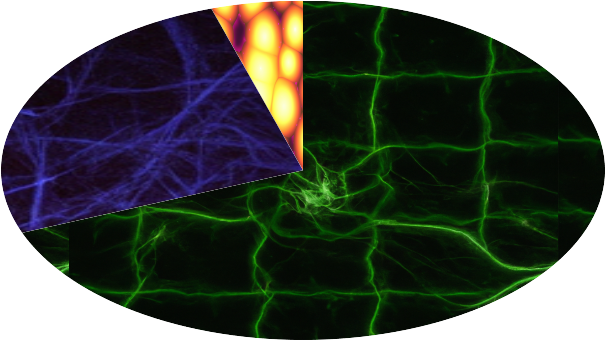
68% Dark Energy
5% Baryons
27% Dark Matter
The expansion History

photometric primary probe

- Photometric galaxy density distribution.
- Bins convolved with photometric redshift PDF
- 10-15 bins in future Stage-IV surveys

- Window functions (Kernels projecting correlations into angular space) -> Limber
- Cosmic Shear Kernels are "delocalized" in z -> k
- Localization techniques such as BNT to allow for clear cuts
Euclid: Forecasts for kk-cut 3×23×2 Point Statistics, P. Taylor, V. Cardone, ..., SC, et al. 2012.04672
spectroscopic probe

BAO / AP-effect
Clustering
RSD

Spec-z
Euclid will also measure the 2pt corr-func of spectroscopic galaxies in redshift space
Euclid preparation: VII. Forecast validation for Euclid cosmological probes, Blanchard et al. arXiv:1910.09273
FoG

BAO-damping / IR-resummation
Fisher Matrix Forecasts

Bayes Theorem:
Probability of the model parameters given the data

Fisher Information Matrix:
Curvature (Hessian) of the Likelihood
Gaussian Likelihood in data space:
How do we actually perform those forecasts?

J. Schaffmeister
Euclid preparation: VII. Forecast validation for Euclid cosmological probes, Blanchard et al. arXiv:1910.09273
Fisher Matrix Forecasts
Fisher Matrix for a Gaussian likelihood of angular power spectra:
Parameter covariance:

Defines an ellipse:



Euclid preparation: VII. Forecast validation for Euclid cosmological probes, Blanchard et al. arXiv:1910.09273
In this 2-point correlation function we can see geometric features that are directly related to the expansion history of the Universe
spectroscopic probe
Rademacher, Linde, Lesgourgues, Moradinezhad, SC in prep.

The more-realistic GCspectro model, based on Senatore, Ivanov, Simonovic, Vlah, et al


CLASS 1-loop Code in development
PRELIMINARY
1-loop PT of density and velocity in redshift space
4 counterterms, 4 shot-noise, 4 higher-order biases
Trade-off: larger error bars, more accuracy, less biasing
- In MG -> much more complicated (Kernels, Einstein-de-Sitter approx., screening, RSD)
PyBird, PBJ, Fast-PT- In Euclid:Bose et al (in prep.) we show that for conservative Euclid error bars, approximations are fine in terms of \(\chi^2\), for f(R), DGP, ...
Modified Gravity and Dark Energy

- Add a scalar degree of freedom to the Einstein-Hilbert action
- (Non-)Minimal coupling, Kinetic terms
Vera Rubin LSST
DESI telescope
- 14 000 square degrees in the sky
- 20-40 million accurate spectra
- Redshifts: 0 < z < 2 (spectroscopic)
- Quasars up to z~3.5
- 5 years of observation
- Starting 2021
- Power spectra, Bispectra, Corr. Func.


Just 7 months of DESI data

5000 robotically controlled optical fibers
Tucson, Arizona, in the Schuk Toak District on the Tohono O’odham Nation
Credits: https://www.desi.lbl.gov
Just 7 months of DESI data
Vera Rubin LSST
Square kilometer array (SKAO)

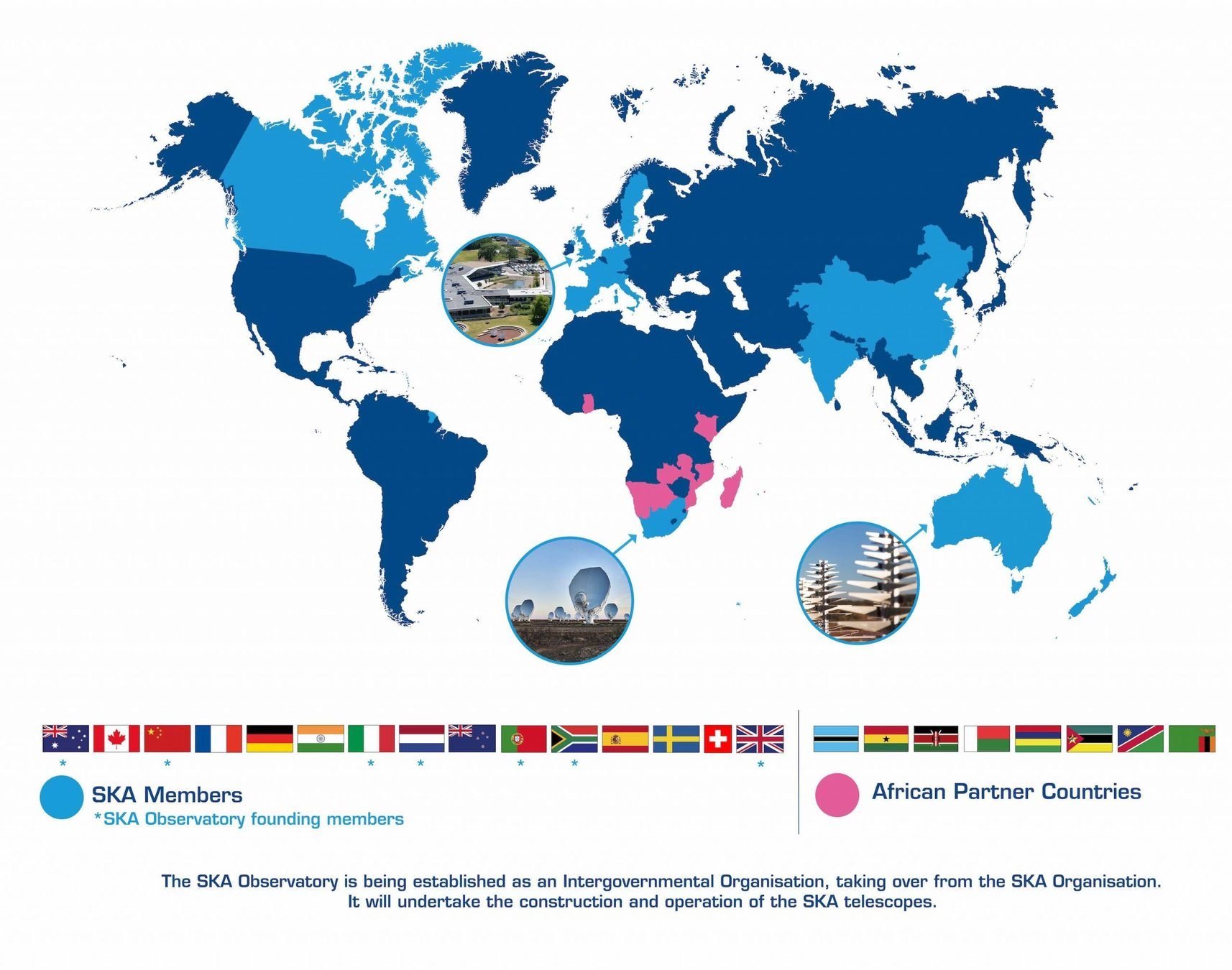
- SKA Phase 1: SKA1-Low and SKA1-Mid
- SKA1-Low: 130,000 dipole antennas, 65km max. baseline (Australia)
- SKA1-Mid: ~200 dishes of ~15m diameter, max. baseline 150km (South Africa)
- Precursors: ASKAP, MEERKAT, HERA...
- €1.3 Billion, 16 countries, 710 Petabytes, 8 years construction

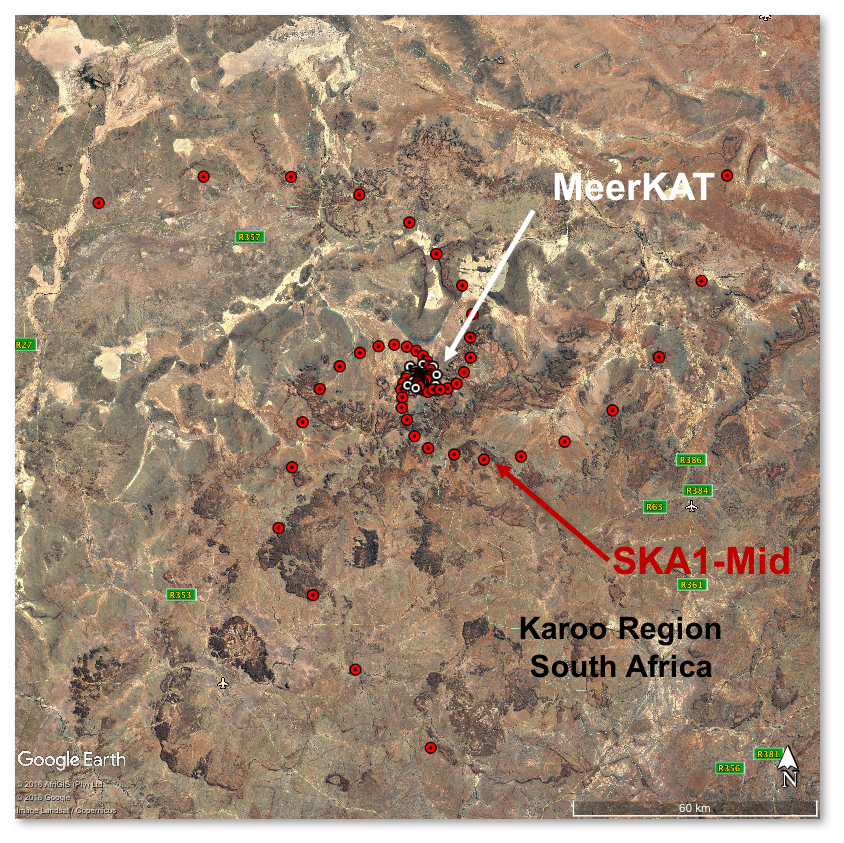


https://www.skao.int/
a SCALAR-tensor theory



Gregory Horndeski
https://www.horndeskicontemporary.com/works
Costa Rica - Arenal Volcano
- Horndeski theory: most general theory for an extra scalar degree of freedom, with second order equations of motion in 4D and no ghosts
- 5 Lagrangian terms, which have been largely ruled out by:
- Late-ISW
- GW170817
- No self-acceleration -> uninteresting?

Gregory Horndeski
https://www.horndeskicontemporary.com/works
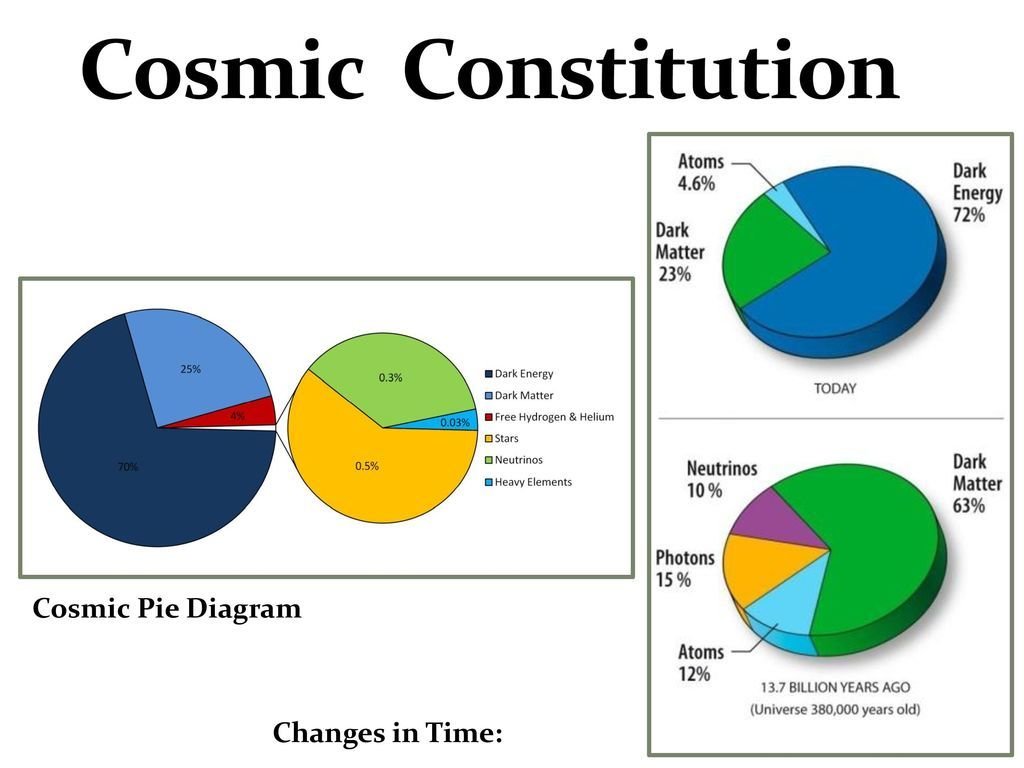
Credits: Tobias Liaudat, CosmoStat
Euclid Shape Pipeline

Credits: Rodlophe Cledassou, CNES
Euclid

Big bang nucleosynthesis

doi: 10.1146/annurev.nucl.012809.104521
Age of the Universe
Temperature of the Universe
Cosmic microwave background

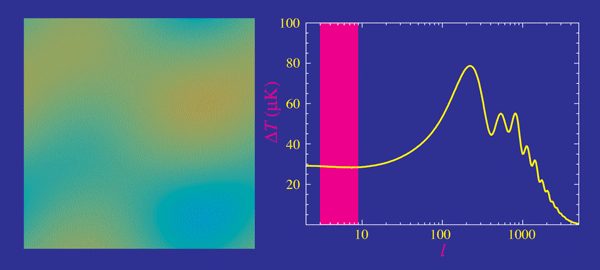


- Planck measurements, essentially cosmic-variance limited in TT
- Percent precision in cosmological parameters
- Degeneracies in \(\Omega_k\), \(\Omega_m\) and \(H_0\) broken with BAO and lensing
- \(H_0 = 67.37 \pm 0.54 \, \textrm{km/s/Mpc}\)
Planck 2018 results. VI. Cosmological parameters https://arxiv.org/abs/1807.06209
https://www.cosmos.esa.int/web/planck
Possible solutions and new directions
- \(\Lambda\) ?
- Inflation ?
- \(m_{\nu}\) ?
- LSS ?
- Big data?
Outline of working fields
- Coupled Quintessence
- Higgs-Dilaton
- Modified Gravity
- Horndeski/EFToDE
- EFToLSS
- Emulators
- Machine Learning
- Variational inference
- Stage-IV surveys
Radio and Optical

Galaxy Clustering and Cosmic Shear
Weak gravitational lensing
Galaxy Clustering
Orientation and ellipticities


Angles and redshifts
Supernovae Type Ia and Local H0
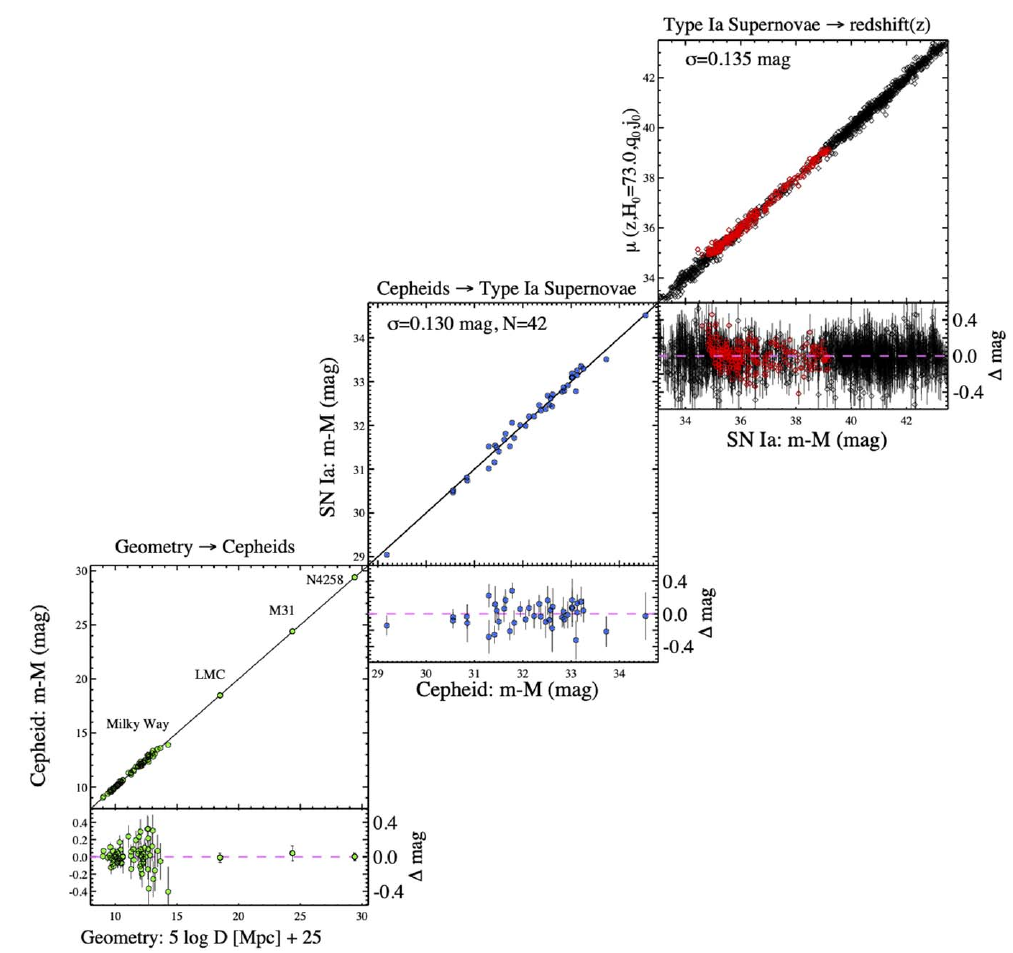
- In general: confidence on the distance ladder
- Concerns on calibration, anchors dust or
metallicity, have basically
faded out - Riess et al 2022*:
\(H_0 = 73.30 \pm 1.04 \, \textrm{km/s/Mpc}\)
using Cepheids and
high-z SNIa
* The Astrophysical Journal Letters, 934:L7 (52pp), 2022 July 20
Neutrinos Masivos en Cosmologia

Neutrinos masivos: Free streaming


CMB angular spectrum and matter power spectrum are both dependent on neutrino mass, N_eff and ordering
Linear Perturbations


Vlasov-Poisson system is a set of diff.eqn. in which all matter-radiation species are coupled
Slides by: Dennis Linde

https://www.pablocarlosbudassi.com/2021/02/the-infographic-and-artistic-work-named.html
f(R) Hu-Sawicki model
Text
Modification of the Einstein-Hilbert action
Induces changes in the gravitational potentials *
*for negligible matter anisotropic stress
Scale-dependent growth of matter perturbations
Small changes in lensing potential
Free parameter: \(f_{R0}\)
Hu, Sawicki (2007)
"Fifth-force" scale for cosmological densities
\(\lambda_C =32 \rm{Mpc}\sqrt{|f_{R0}|/10^{-4}}\)
Euclid: Casas et al (2022) in preparation
f(R) Hu-Sawicki model
Text
Euclid: Casas et al (2022) in preparation

Codes used: for background and scale-dependent linear perturbations: MGCAMB and EFTCAMB

For non-linear power spectrum:
Winther et al (2019) fitting formula


